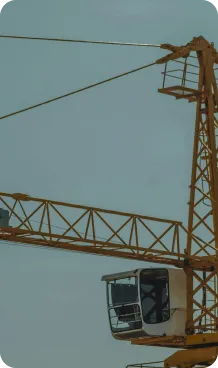As construction projects consistently rely on ready mix concrete, the demand for...
Crane Hand Signals: How Many Do You Know?

In the bustling and often noisy environment of a construction site, effective communication is paramount for safe and efficient operations. Crane hand signals have long been a crucial part of this communication, bridging the gap between crawler crane operators and ground crews. Developed to address the inherent challenges of visibility and noise on job sites, these signals have become standardized and universally recognized, ensuring clear and concise communication between team members.
In this quick guide, we'll provide you with a written and illustrated explanation of the most commonly used hand signals.
Stop:
To signal the operator to stop, extend your arm horizontally to the side, palm down, and swing your arm back and forth. This signal signifies the end of each action and is used in combination with most hand signals to end the current task.

Emergency Stop:
Use both arms extended horizontally to the side, palms down, and swing both arms back and forth. This signal is to be used in critical situations requiring an immediate halt of all operations, such as clear and imminent danger or malfunction.

Hoist:
With the upper arm extended to the side and the forearm and index finger pointing straight up, make small circles with your hand and finger. This signal instructs the operator to hoist the load.

Lower:
Extend your arm with the index finger pointing down, and make small circles with your hand and finger. This signal instructs the operator to lower the load.

Use Main Hoist:
Tap your hand on top of your head, then use regular signals to indicate the desired action. This signal instructs the operator to use the main hoist.

Use Whip Line (Auxiliary Hoist):
Bend your arm at the elbow with the forearm vertical, and tap your elbow with your other hand. Then use regular signals to indicate the desired action. This signal instructs the operator to use the whip line or auxiliary hoist.

Boom Up:
Extend your arm horizontally to the side, with your thumb pointing up and other fingers closed. This signal instructs the operator to raise the boom.

Boom Down:
Extend your arm horizontally to the side, with your thumb pointing down and other fingers closed. This signal instructs the operator to lower the boom.

Move Slowly:
Place your hand in front of the hand giving the action signal, indicating that the movement should be slow. This signal is used to instruct the operator to move the load slowly in combination with action signals such as the hoist signal.

Swing:
Extend your arm horizontally, pointing your index finger in the direction that the boom should swing. This signal instructs the operator to swing the boom.

Boom Down and Raise the Load:
Extend your arm horizontally to the side, with your thumb pointing down and fingers open and close while indicating the desired load movement. This signal instructs the operator to lower the boom and raise the load.

Boom Up and Lower the Load:
Extend your arm horizontally to the side, with your thumb pointing up and fingers open and close while indicating the desired load movement. This signal instructs the operator to raise the boom and lower the load.

Travel:
Extend your arm horizontally out and back, with all fingers pointing up, making a pushing motion in the direction of travel. This signal instructs the operator to travel in a specific direction.

Dog Everything:
Hold your hands together at waist level, indicating a pause or stop in operations. This signal is used to instruct the crane operator to secure or lock all crane functions.

Crane hand signals play a vital role in ensuring safety and efficiency on construction sites. By understanding and using these signals effectively, operators and ground personnel can communicate clearly and prevent accidents. Construction safety should always be the top priority, and these signals help to maintain a safe working environment for everyone involved in construction projects.
To have a view of the signals in action on-site, you can check out our video on Crane Hand Signals.
LEARN FROM OUR INDUSTRY EXPERTS
Latest news & updates

Own a CIFA Concrete Pump with Flexible Lease-to-Own Deals

Barakah Nuclear Energy Plant
The Barakah Nuclear Energy Plant is a game changer for the UAE’s global ranking ...

What Crawler Crane Attachments Should You Choose?
From piling work to lifting massive loads, crawler crane attachments provide fle...

Essential Mining Equipment by Al Marwan Machinery
When it comes to mining and heavy construction, the right equipment is crucial f...

Saudi National Day 2024: The Path to Saudi Vision 2030
As Saudi Arabia celebrates its 94th National Day in 2024, the nation stands at a...
